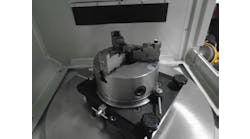The Defense Production Act Committee — an interagency federal body (U.S. Dept. of Defense, U.S. Dept. of Homeland Security) that advises the White House on legislative directions and funding recommendations — has taken up the question of domestic forging capabilities. The DPAC’s Metal Fabrication Study Group is studying whether or not the United States has sufficient industrial capabilities to produce adequate supplies of forged-quality metal parts, as needed by the U.S. Dept. of Defense and other agencies.
Specifically, the group is concerned with the availability of forgings needed to manufacture aircraft wheels and landing gears, vehicle armor, energy-generation equipment, railroad cars, rocket engines, and other critical components.
The Group’s initial survey of domestic forging capabilities concluded that current capabilities are based on capital investments made several decades ago, though the requirements for forged-quality parts has changed over time. As a consequence, according to the group’s announcement, supplies of some critical forged-quality parts have been inadequate to meet important government needs.
To that end, the Metal Fabrication Study Group recently issued a request for information seeking input from industry sources about ways to address current limitations on supplies of forged-quality parts.
The Group also is interested in recommendations for addressing those limitations. Their particular areas of interest include process capabilities and limitations, supply-chain issues, and alternative manufacturing methods and barriers to their implementation.
Howard Harary, deputy director for manufacturing at the National Institute of Standards and Technology (NIST) Engineering Laboratory, leads the Metal Fabrication Study Group. He confirmed that the Group is coordinating its inquiry with the Forging Defense Manufacturing Consortium, a partnership of forging suppliers that works to solve procurement problems for parts needed to update legacy weapons systems.
The Metal Fabrication Study Group’s request for information has a deadline of April 9.











